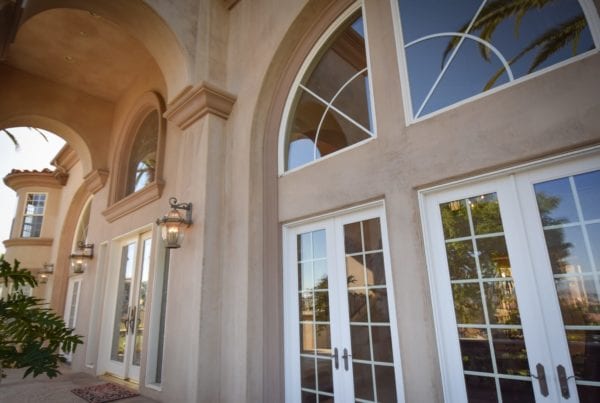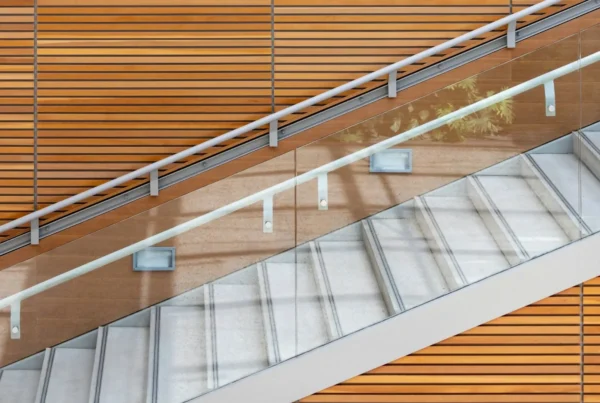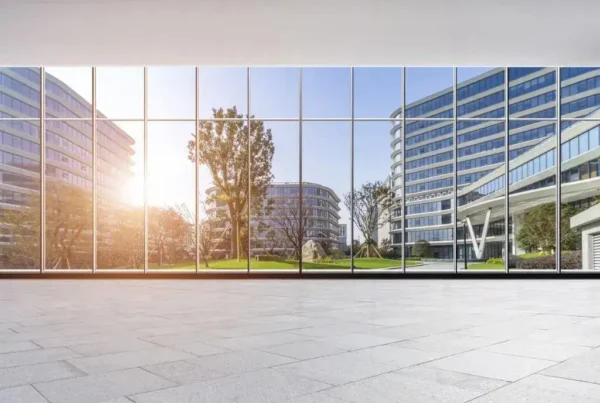Civil unrest featuring armed mobs of rioters trying to force entry to a government building. An active threat targeting the building and its occupants. Hurricane-force winds hurling debris into windows. These are top government building security concerns that require the right combination of security measures, including security glazing, to mitigate.
Government Building Security Glazing Options (Benefits and Limitations)
The perceived threat level of any particular government building, or how likely it is to be the target of forced entry, a violent attack, or mother nature, will guide government entities in choosing the ideal security glazing solutions for their needs. This can be determined by conducting a professional threat and risk assessment to identify vulnerabilities and receive security upgrade recommendations.
The recommendations provided by a government building security threat and risk assessment may include retrofitting the building’s window and door glass with some combination of safety and security window film, security glass, and non-glass security glazing. Depending on the chosen security glazing solutions, different levels of forced entry resistance and even bullet resistance can be achieved.
Government Building Security Window Film Application
Applying safety and security window film to vulnerable windows is the most basic commercial window security upgrade that government buildings can make.
This type of window film consists of a pliable, polyester-based coating that is applied directly to a building’s existing windows to reinforce the glass against impacts and, more importantly, hold the pieces of glass together in the event of breakage.
It’s important to understand that security window film does not prevent windows from breaking due to high-force or repeated impacts, but it does hold broken shards of glass in place. This characteristic provides two main benefits:
- Delays forced entry
- Reduces the risk of injury
In a forced entry scenario, security film is not going to prevent determined intruders from gaining unauthorized access to a facility. However, it can delay their forced entry attempts, giving security personnel and police more time to respond and creating a small window of time for building occupants to react.
During incidents of civil unrest or active threat scenarios, this delay and window of time can allow building occupants to get to safety and give those responsible for their security a few more minutes to do their job.
Since safety and security window film holds broken shards of glass in place, it also prevents the sharp, jagged shards from flying dangerously inwards during a forced entry attempt or a storm, reducing the likelihood of injury to building occupants.
Other Government Building Security Glazing Options: Security Glass and Non-Glass Glazing
Despite the potential benefits of security window film for government buildings, it’s really not the best solution for high-security facilities.
In order to truly prevent forced entry and keep attackers out during rioting or an active threat scenario, government buildings should retrofit windows and doors with security glass or non-glass (polycarbonate-based) security glazing.
These types of solutions, such as Riot Glass, are available in containment-grade (non-ballistic) and bullet-resistant (ballistic-grade) varieties, offering different levels of access denial and protection against ballistic attacks.
Depending on the solution’s specific composition, it can be virtually unbreakable, meaning it will remain a barrier to forced entry during a determined, prolonged forced entry attempt, and even if penetrated with bullets.
Unlike security window film, which can only provide a minimal delay to forced entry and improve the safety of building occupants, solutions like Riot Glass can completely deny even the most violent attempts to gain unauthorized access to a facility. This gives ample time to building occupants to get to safety and allows the proper authorities to arrive and control or neutralize the threat.
How Does Retrofitting Riot Glass To Harden Government Building Security Work?
Many Riot Glass solutions can be overglazed (mounted on top of) or backglazed (mounted behind) existing glass surfaces using retrofittable framing adapters that hold the new glazing securely in place within the existing framing structure.
Riot Glass even has a solution for historic government buildings that feature protected heritage architecture: J-Series compression-fit sub-framing. This sub-framing can be custom-built to fit virtually any window opening, then installed without drilling into or otherwise permanently modifying the surrounding structure.
The non-invasive installation allows for the retrofitting of forced entry-resistant and ballistic-grade security glazing in historical properties that must adhere to strict architectural preservation guidelines, making it ideal for hardening historic courthouses and other historic government buildings.
What About Privacy and Confidentiality in Government Buildings?
Another important part of keeping government buildings secure is creating high levels of privacy wherever needed to maintain the confidentiality of sensitive government activities. This can be challenging in government properties that feature lots of glass doors and windows, through which prying eyes may gain access to confidential information.
Fortunately, there are a few different ways government buildings can add privacy to their glass surfaces. These include:
- Applying privacy window film
- Installing decorative window film
- Using specialized cloaking window film
Privacy window film includes dark-tinted, reflective, frosted, and opaque films that can be applied to virtually any glass surface to add daytime privacy or completely obscure the glass.
Certain types of decorative window films can be used in a very similar way to privacy films, with the added benefit of customizability. This allows government buildings to add branding or other graphics that improve the aesthetics of the building and its spaces, while still creating privacy to help maintain confidentiality.
Lastly, when there are people performing confidential work on computers near windows, specialized cloaking window film is an option. This film is designed specifically to prevent visual hacking by obscuring digital screens to anyone trying to look at them through the glass from the outside.
Wrapping Up
Government building security is a complex matter that requires comprehensive solutions, including the right combination of glazing materials and products.
At Campbell Glass and Films, we offer a full range of security glazing for government buildings and other high-security applications. Contact us today for a consultation!





